These small bees are abundant in most landscapes from early spring until the hard frosts of October and November. Most of the nearly 40 species in the state are impossible to identify from photos. Below are a few that can at least occasionally be recognized.
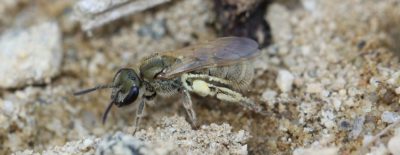
Hairy Sweat Bee Group
Two species in Vermont that were recently split and are very challenging to separate from each other. As a group they are unique in having abundant matted hairs on the abdomen. Both have affinities for sandy areas. Image courtesy Michael Veit.
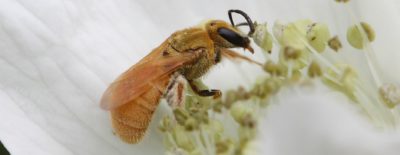
Viereck's Sweat Bee (Lasioglossum vierecki)
The golden hairs and yellow body make this small Dialictus instantly recognizable. Only found close to sand. Image courtesy Michael Veit
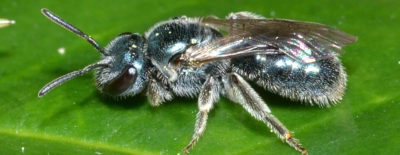
Deep-blue Sweat Bee (Lasioglossum coeruleum)
Most (but not all) individuals are a distinctive brilliant blue. One of a few Dialictus species that nests in rotten logs. Image courtesy Margarita Lankford.
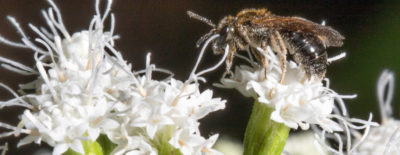
Black-and-green Metallic Sweat Bee (Lasioglossum nigroviride)
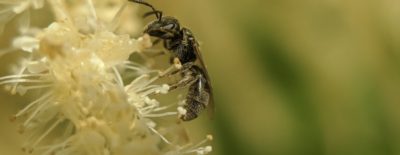
Bristle Sweat Bee (Lasioglossum imitatum)
A common, tiny species that is fond of disturbed areas but easy to overlook. The thick bristles on T4 and T5 are distinctive.
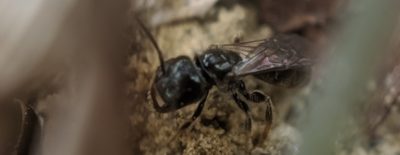
Parasitic Dialicitus
Though relatively rare and hard to find, Vermont has a couple of Dialictus species that are cleptoparasites of other Dialictus species. They tend to be very small with massive heads and mandibles.






